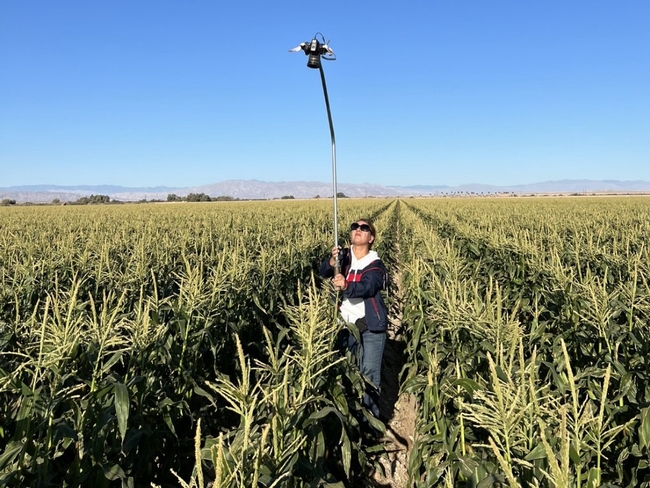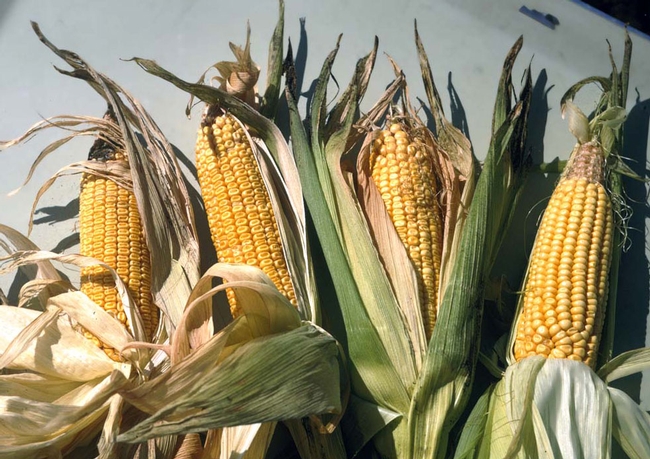
Posts Tagged: corn
Drip-irrigation study sees ‘huge’ reduction in water, fertilizer use for sweet corn
Study by UCCE advisor in Imperial County also shows 5% increase in yield
A new study suggests that drip irrigation for sweet corn can significantly conserve water, reduce fertilizer use and boost crop yield in the low desert of California – and likely in other areas of California with similar conditions.
Although Imperial County is California's top sweet corn-producing county, with about 8,000 acres planted on average each year, irrigation methods for this crop have been rarely studied in this region (or anywhere else in the state), according to Ali Montazar, UC Cooperative Extension irrigation and water management advisor for Imperial, Riverside and San Diego counties.
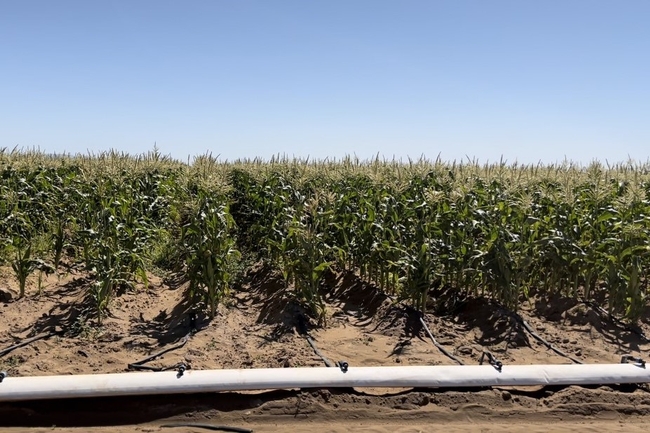
Montazar conducted a study in the Imperial Valley over two crop seasons, 2020-21 and 2021-22, to demonstrate and quantify the potential benefits of switching to drip irrigation from the more common furrow irrigation method. The study, available in a recent issue of UC Agriculture and Natural Resources' Agricultural Briefs, will be published in a future issue of Vegetables West.
“I'm hoping with this project we can encourage growers to adopt it, because it seems very promising,” said Montazar, noting that drip irrigation is a “new practice” for sweet corn in California.
Among the 11 commercial sweet corn fields in the study over the 2021-22 season, the six that were under drip irrigation used, on average, 37% less water than the five under furrow irrigation. In absolute terms, the drip-irrigated fields saw an average water savings of 2.2 acre-feet per acre; for Montazar, who has studied drip for a variety of crops in the Imperial Valley, that was an astonishing result.
“I've worked with drip on processed onions, lettuce, alfalfa, spinach … we've never seen a figure like 2.2 acre-feet per acre, that's huge,” he said, attributing the dramatic drop-off to the high volume of water required to furrow-irrigate the sandy soil in the Imperial Valley.
More efficient irrigation also means less fertilizer is needed – a boon to the environment and Salton Sea water quality, as well as growers' bottom line. With fertilizer prices continuing to rise, sweet corn growers using drip could see a substantial 25% cost savings on fertilizer expenses – about $150 per acre less – compared to furrow irrigation, according to Montazar's study.
And by relieving plants of the stress from over- and under-irrigated conditions, drip irrigation helps keep soil moisture at its “sweet spot” – resulting in a 5% increase in marketable crop yield for sweet corn in the study.
“When we have a better, more efficient irrigation system, we can maintain soil moisture at a desired level, over time and space,” Montazar explained.
Because the benefits of drip appear to be linked to soil conditions (sandy loam, and other light soils), Montazar believes that this irrigation practice could deliver relatively similar water and fertilizer savings and improved crop yield in other regions across California, regardless of climactic differences.
“If you use drip in any part of the state, you have the benefits of drip – more uniform water application, more uniform fertilizer – that's not related to the desert,” he said. “That's part of the system's potential.”
Montazar plans to follow up on his preliminary study with additional research on sweet corn and drip irrigation during the 2022-23 crop season.
UC Davis Researcher and Colleagues Target 'Billion-Dollar Pest'
If you like corn, you should be concerned about a pest that's known as "the billion-dollar beetle." The Western corn rootworm is called that because its larvae ravage America's corn crops to the economic tune of $1 billion a year. Enter a team of nine researchers, including UC Davis...
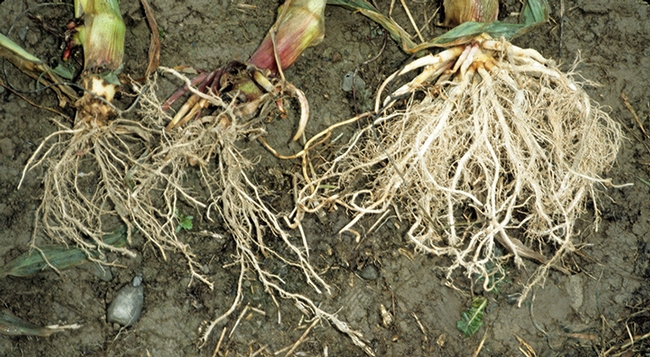
This image by Keith Waldron shows rootworm damage. The corn rootworm is a billion-dollar pest.
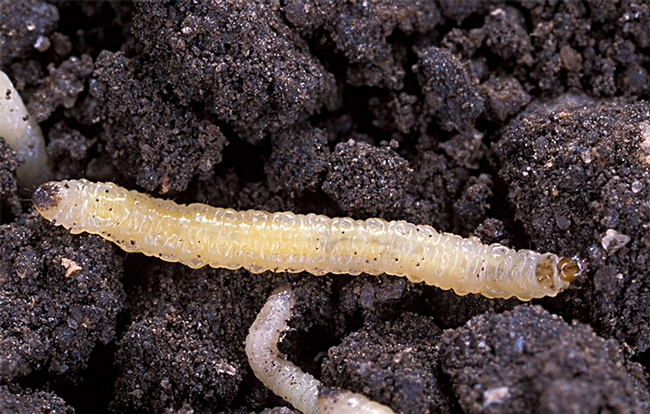
Rootworm larvae. (Image courtesy of Wikipedia Creative Commons)
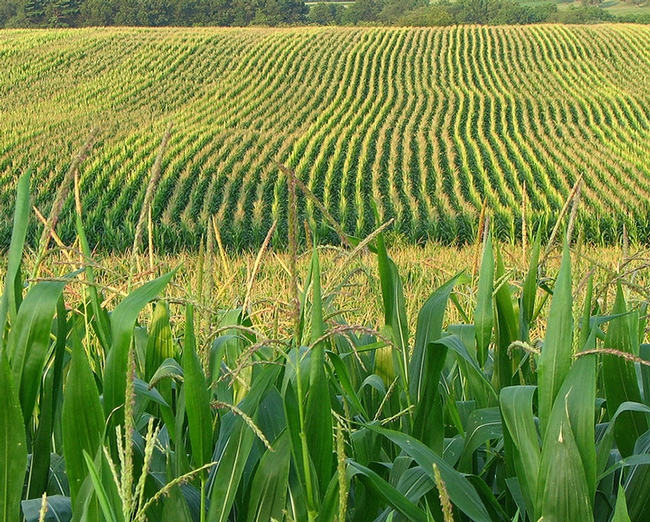
The Western corn rootworm ravages cornfields across the nation. This image was taken in Franklin, Pa. (Photo by Fishhawk of Flickr, Creative Commons)
UC studies estimate cost of production for six crops

Each analysis is based upon a hypothetical farm operation using practices common to the region. Input and reviews were provided by growers, UC Cooperative Extension farm advisors and other agricultural associates. The authors describe the assumptions used to identify current costs for individual crops, material inputs and cash and non-cash overhead. A ranging analysis table shows profits over a range of prices and yields. Other tables show the monthly cash costs, the costs and returns per acre, hourly equipment costs, and the whole farm annual equipment, investment and business overhead costs.
The studies for establishing orchards to produce lemons and oranges estimate costs for growing in Kern and Tulare counties. Revenue for the citrus is based on estimated sales to the fresh packaging market.
The study for organic strawberries takes into consideration growing conditions on the Central Coast of California and complying with the National Organic Program. In particular, it focuses on growing organic strawberries in Santa Cruz and San Benito counties for the fresh packaging market.
The study for producing paddy rice in the Sacramento Valley focuses on the costs of growing medium-grain rice, under a rice-only rotation in Butte, Colusa, Glenn and Yolo counties.
The field corn study focuses on the production costs of a full-season corn crop in the Sacramento Valley and the northern San Joaquin Valley. This region would include Colusa, Glenn, Sacramento, Sutter and Yolo counties. The study based costs on a farm using furrow irrigation and Roundup Ready-GMO seed.
The study on silage corn, double cropped under conservation tillage methods, focuses on production costs of corn silage using minimum tillage operations in the northern San Joaquin Valley. The corn is planted in the spring after a winter forage crop is harvested. The study is based its costs on a farm using border/flood irrigation and Roundup Ready-GMO seed.

- “Sample Costs to Establish an Orchard and Produce Lemons in the San Joaquin Valley-South-2015”
- “Sample Costs to Establish an Orchard and Produce Oranges in the San Joaquin Valley-South-2015”
- “Sample Costs to Produce Organic Strawberries in the Central Coast Region-2014”
- “Sample Costs to Produce Rice in the Sacramento Valley-2015”
- “Sample Costs to Produce Field Corn in the Sacramento Valley and Northern San Joaquin Valley-2015”
- “Sample Costs to Produce Silage Corn-Conservation Tillage Practices in the Northern San Joaquin Valley-2015”
These cost-of-production studies can be downloaded for free from the UC Davis Department of Agriculture and Resource Economics website http://coststudies.ucdavis.edu. Sample costs are also available for many other commodities. Many earlier production cost studies for agricultural commodities are also available at http://coststudies.ucdavis.edu/archived.php.
For additional information or an explanation of the calculations used in the studies, contact Don Stewart, staff research associate in the Department of Agriculture and Resource Economics at UC Davis at (530) 752-4651, destewart@ucdavis.edu.
'More crop per drop' drought strategy touted
Corn silage producers can get 'more crop per drop" with deficit irrigation, however productivity will decline, reported Dennis Pollock in Western Farm Press. Pollack based the story on a seminar at the World Ag Expo earlier this month presented by Mark Lundy, UC Agriculture and Natural Resources Cooperative Extension advisor for Colusa, Sutter and Yuba counties.
Lundy said there are certain times in the crop's development that farmers will not want to stress the corn silage - when tassels and silk are forming. At other times in its development, even if the corn is stressed, the application of more water does not bring a proportionate increase in yield.
The UC ANR advisor suggested farmers choose planting dates, varieties and cultural practices that will maximize irrigation efficiency.
“Look at what you choose to grow and perhaps plant later with a short variety or drought tolerant variety,” he said. “And get weeds under control. They take up water.”
New Plant Protein Discoveries Could Ease Global Food and Fuel Demands - UC San Diego

Click here to read the full article from UC San Diego>>

